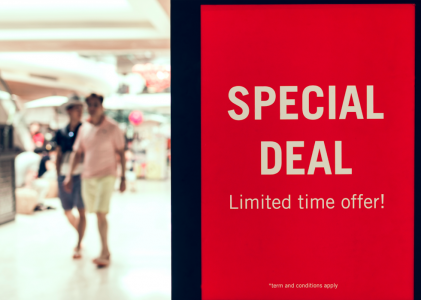Recent cries to enhance security around display advertising were made by the world’s largest advertiser, Procter & Gamble (P&G). This ad giant spent 4.2B in US advertising last year and has a huge influence on the industry at large. Their problem is that due to programmatic fraud, advertisers can end up paying for false clicks and impressions. It’s not just P&G though, nobody involved in the RTB exchange wants fraud. The biggest fear is that the more advertisers will question display advertising following P&G.
The Acquisio Trade Desk (ATD) have responded to the situation through White Ops. White Ops is a revolutionary cyber security firm that blocks fraudulent impressions in real time before they’re purchased. They filter out non-human impressions, called sophisticated invalid traffic (SIVT). Essentially this new White Ops alliance creates new measures to protect clients from paying for fraudulent inventory, and advertisers can definitely get excited about that. Best part is that it’s free.
It’s an interesting story so we sat down with one of our expert Senior Display Campaign Managers, Tiffany-Ann McNeil, to get the full scoop on fighting back against fraud and bots.
Transcript:
Chandal: Hi I’m Chandal, Acquisio’s Content Manager! I’m here today with Tiffany McNeil, Senior Campiagn Manager for our ATD (Acquisio Trading Desk).
Today, we’re addressing fraud in display and programmatic. It’s huge in the media right now, Procter&Gamble just pulled out millions from their display service budget with the agency they were using. It’s rippling across the industry, people are afraid, they don’t know what this means so we’re talking about that today.
Part 1: What is the impact that fraud is having on programmatic advertising in the industry?
Tiffany: That’s a great question. I feel it’s something that we shouldn’t ignore anymore. The existence of fraud in programmatic is causing a rippling effect – clients and agencies are all asking that question: what are you doing to prevent that?
Just to give you an example, there was a study last year from the ANA (Association of National Advertisers) that said that roughly 7.2 billion dollars was attributed to ad fraud. The worst part of it is that actually associates to 60% of all digital ad spend, excluding Facebook and Google, so all the other publishers. That’s very scary when you think about it.
Even a giant like Google, who we feel has so many pre-bidding solutions, actually had to issue some refunds because the DoubleClick bid manager had some ads shown on malicious sites or fraudulent sites and they offered a refund. They also set up an automated system to continue to give refunds. So obviously, they are preparing for the future.
We’re trying to adapt to a situation where there’s a lot of bad players that come into the space. The programmatic space is an open marketplace and environment, so anyone can participate, which often casts a shadow on display.
Chandal: So what you’re saying is that even in Google’s display services, fraud exists and they’ve addressed that to the point where they are issuing refunds for people who are experiencing fraud in the GDN?
Tiffany: That’s correct. Obviously, they don’t want to be doing that. Exchanges or vendors aren’t really open to giving refunds because it’s like playing the blame game – we’re trying to buy inventory on publishers’ sites, but they are the one’s that are malicious, etc.
Coming back to the 60%, it’s important to dissect that number. When you’re looking at Google, or AppNexus (more reputable sites), 10% of the ad spend was contributed to fraud. Whereas less reputable vendors had between 25-50%. So that study was taking everything in aggregate, but it’s important to really dissect where it’s coming from.
Part 2: What does digital fraud mean to you, and to the Acquisio Trading Desk (ATD)?
Chandal: You’re talking about dissecting fraud, as there is more than one type of digital fraud. Can you elaborate for us on what digital fraud means to you, and to ATD?
Tiffany: There’s more to just human and non-human fraud traffic. In terms of non-human (bots), there’s just normal bots which will mimic clicks, impressions, and even go as far as making fake conversions like form fills. There’s sophisticated bots, which are more tricky. They’re using a script and they’re changing proxies or IP addresses, making it really hard to pinpoint.
But what’s even scarier (and I use this term lightly) are botnets. They actually infect computers, so they are able to mimic mouse movement, giving clicks that are a relatively normal benchmark for CTRs, so they don’t seem out of the ordinary. But it’s not human.
All that aside, there’s the human fraud. That’s for an advertisers personal gain, if there are affiliates involved, so this is where it gets more complex. We could have what’s called click farms – imagine a wall of different smartphones, or a bunch of different computers, each with their own unique Device ID cookies. All they do is generate impressions and they click on it. It’s actually human interaction, it’s just not legitimate.
Another form of human fraud on these publisher’s sites is what’s called impression stacking. You’re only seeing one ad show up, but they created these one-by-one pixel squares on the site that will load other impressions, but an actual user will not see it. They also have ways to allow publishers to create their own domains or ID name and they will mask or mimic familiar sites, like Huffington Post. You think you’re buying inventory on that site, but you’re not.
They are very tricky, sinister if you will, but those are the different types of fraud that are out there.
Chandal: There’s human click farms, there’s bot farms, there’s impression stacking, there’s a lot of advances in the ways that people are performing display fraud. So most importantly, what is the industry doing about this? What are we doing about this? How are we addressing fraud in display?
Tiffany: Now, with Google and other publishers offering refunds to clients, they want to minimize that as much as possible. So there are pre-bid solutions that we would call in order to prevent it. We have partnerships with Integral Ad Science, which enable us to make sure there’s brand safety, viewability filters – anything that seems malicious or like bot traffic, there are preventions that we take. As well as internal blocklists, to make sure that specific sites or IPs we know are harmful are blocked before launching campaigns. These are very good preventative measures.
In terms of the industry adapting to it, as much as these fraudsters are getting more and more sophisticated, so are we. We’re fighting back. We have to. We need to protect programmatic and stop that stigma that display is just fraud. That’s not the case.
What’s really great is this partnership with White Ops. They are a cyber-security firm that will revolutionize the way that we bid and win impressions. As you know, RTB is done in a fraction of a second. From the moment the page loads, an ad is served tailored to you, in a fraction of a second. What White Ops will do is go in, identify if this will be any form of fraud (MediaGuard protection) and if they have any doubt, they will null that bid and you will not pay for that impression. In the end, we are preventing fake impressions from being served, saving the end user’s money. We will be able to effectively buy inventory that is relevant and safer for the brand.
Chandal: That’s good to hear! I’m happy to hear that we are advancing alongside the industry. It sounds like there are a number of really sophisticated mechanisms in place through White Ops and other parts of the trading desk to help give advertisers the confidence they need to continue with this channel.
Part 3: What advice can you give to anyone wanting to start display services or anyone who has lost faith in the programmatic ecosystem?
Chandal: With your experience, what is the best thing that they can do to protect themselves?
Tiffany: That’s a good question. Above all, be informed. Understand what’s out there, don’t jump to conclusions. Making assumptions is the worst thing you can do.
If you’re an advertiser or agency and you’re looking to buy display [inventory] or run display campaigns, it’s best to know what technology you’re using – whether it’s a DSP or whether you’re going directly with a managed service.
With my experience as a campaign manager, I like to reassure my clients that we have these pre-bidding technologies – Integral Ad Science, Peer39, and DoubleVerify. These are pre-bid filters that we can put in place to prevent it. Obviously our partnership with White Ops is just revolutionizing how display will go.
People should be informed of what’s out there and how we’re adapting to the situation. As time goes on, yes bots and fraud will get more sophisticated – there’s an endgame to the user (money, etc), there’s a reason for it. But at the same time, with the amount of money that is put in programmatic, and the systems that are in place, we will adapt.
One thing I want to address that is so important is viewability. Having a viewability filter makes sure that the ads are being seen. When you deal with DSPs or display, you’re more likely using a CPM model meaning you’re paying for impressions.
When it comes to impression stacking, etc, we want to make sure our clients are protected. We are informed as campaign managers and people of the industry to make sure that we eliminate the risk.
I can’t stress enough that this partnership with White Ops with their MediaGuard technology will really change the way fraud is looked at and maybe big advertisers like P&G will be more open and receptive to that going forward.
Chandal: That’s really good advice for any advertiser looking to get into the programmatic space, who is unsure and wanting to know more about these issues and how they can protect themselves. Thank you so much for sharing all your expertise with us! We hope everyone learned a lot about fraud and how to protect themselves.
Tiffany: And what the industry is doing to protect you.
Image Credits
Feature Image: Unsplash/Toa Heftiba



